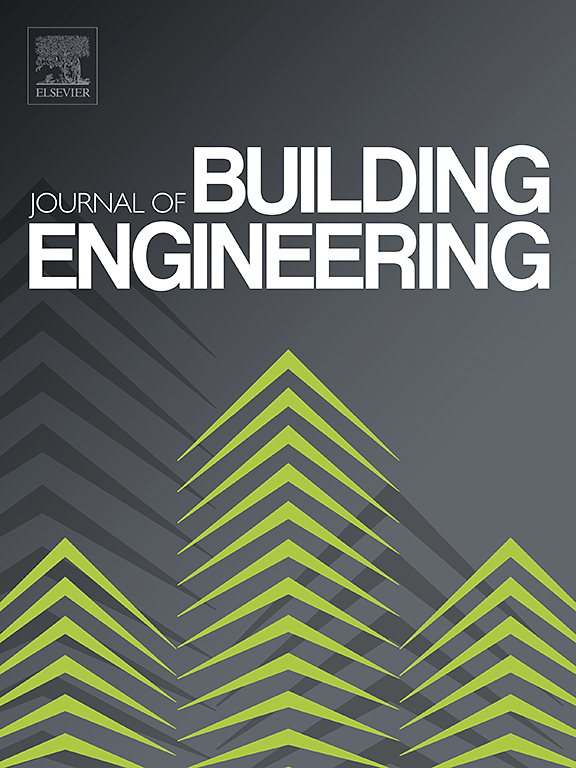Allowable surface temperature of ceiling heating based on radiant temperature asymmetry
IF 6.7
2区 工程技术
Q1 CONSTRUCTION & BUILDING TECHNOLOGY
引用次数: 0
Abstract
Radiant temperature asymmetry as one of the criteria for local thermal discomfort has an influence on the practical design of the heating system, as people are most sensitive to the radiant heating of the top of the head. The paper presents the determination of the allowable surface temperature of the heated ceiling based on the theoretical calculation using the angle factors and taking into account the allowable the radiant temperature asymmetry according to the standard values of 5 and 7 K. In practice, the radiation temperature asymmetry is determined by measuring two radiant temperatures. In this paper, the measurement of radiant temperature asymmetry is measured in an experimental room with a heated ceiling and the results are compared with the theoretical calculation procedure. The paper points out the differences between the measured and calculated values of the radiant temperature asymmetry. Based on the analyses, the allowable ceiling temperatures for radiant heating have been determined for different room geometries so that the radiant temperature asymmetry for thermal comfort categories A, B is actually observed. A new correlation has been established to determine the allowable surface temperature of the radiant ceiling as a function of the angle factor between the small plane element and the ceiling. For practical use, the correlation has been adjusted for typical geometric cases without the need for calculation of angle factors. Maximum ceiling surface temperatures are graphically displayed without causing thermal discomfort. Conversely, in large rooms with a heated ceiling, the ceiling surface temperature is severely limited, precisely because of the potential for thermal discomfort due to radiant temperature asymmetry.
基于辐射温度不对称的天花板加热允许表面温度
辐射温度不对称作为局部热不适的标准之一,对加热系统的实际设计有影响,因为人们对头顶的辐射加热最为敏感。本文介绍了在使用角度系数进行理论计算的基础上,根据 5 和 7 K 的标准值并考虑到允许的辐射温度不对称,确定加热天花板的允许表面温度。本文在一个带有加热天花板的实验房间内对辐射温度不对称进行了测量,并将测量结果与理论计算程序进行了比较。本文指出了辐射温度不对称测量值和计算值之间的差异。根据分析结果,确定了不同房间几何形状的辐射供暖允许天花板温度,从而实际观察到热舒适度类别 A、B 的辐射温度不对称。我们建立了一种新的相关关系,以确定辐射天花板的允许表面温度与小平面元件和天花板之间的角度系数的函数关系。为便于实际使用,已针对典型的几何情况对相关性进行了调整,而无需计算角度系数。天花板表面的最高温度以图形显示,不会造成热不适。相反,在有加热天花板的大房间中,天花板表面温度受到严格限制,这正是因为辐射温度不对称可能导致热不适。
本文章由计算机程序翻译,如有差异,请以英文原文为准。
求助全文
约1分钟内获得全文
求助全文
来源期刊

Journal of building engineering
Engineering-Civil and Structural Engineering
CiteScore
10.00
自引率
12.50%
发文量
1901
审稿时长
35 days
期刊介绍:
The Journal of Building Engineering is an interdisciplinary journal that covers all aspects of science and technology concerned with the whole life cycle of the built environment; from the design phase through to construction, operation, performance, maintenance and its deterioration.
 求助内容:
求助内容: 应助结果提醒方式:
应助结果提醒方式:


